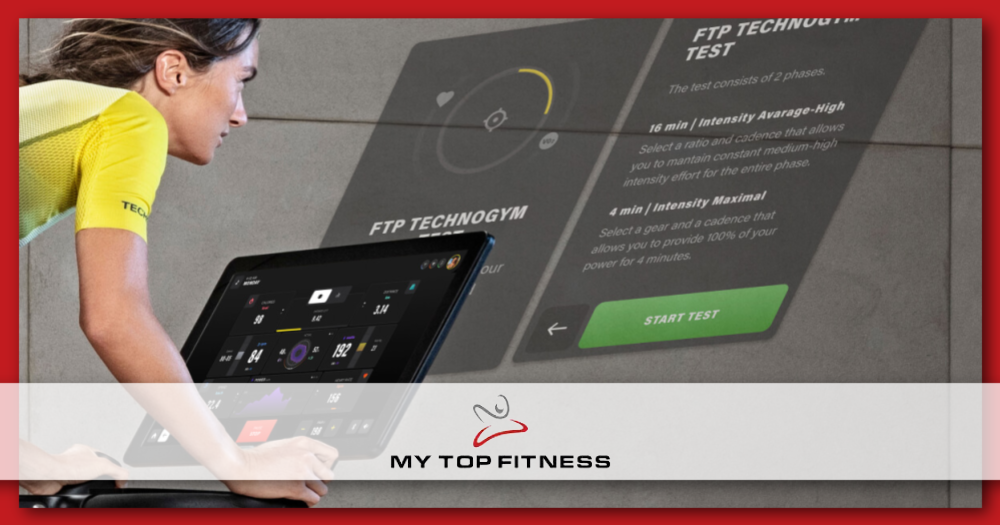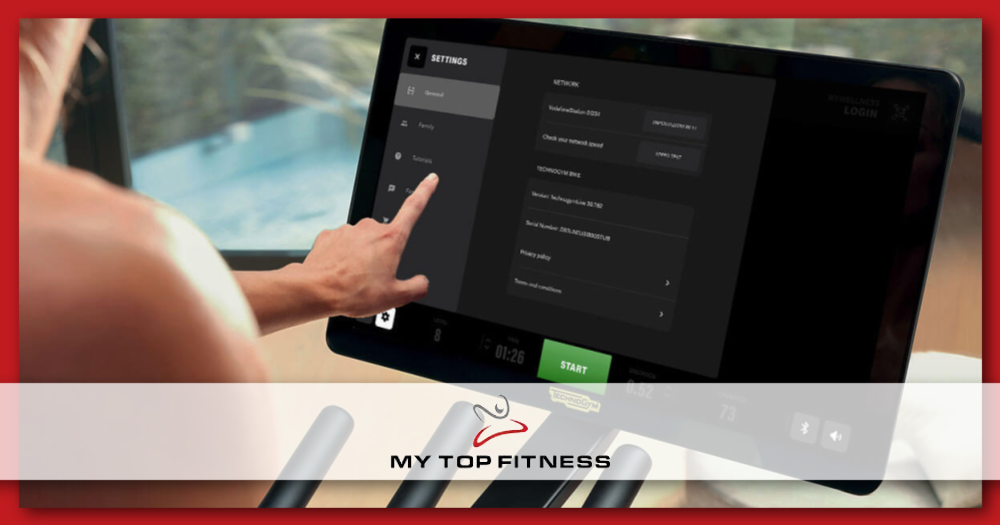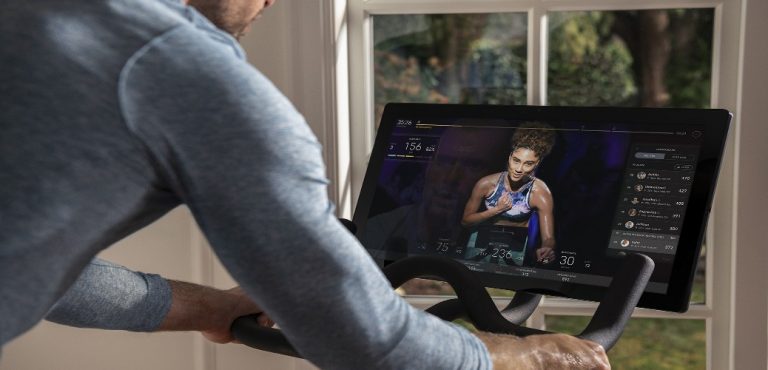The Peloton FTP Test in 2023: A Comprehensive Guide
Are you ready to unlock your true cycling potential and supercharge your workouts? The Peloton FTP server. Test is your key to personalized training, and we’ve got the most comprehensive guide for you right here. Master the art of Power Zones and revolutionize your training experience!
Short Summary
- Measure and track your progress with the Peloton FTP Test for Power Zone training.
- Prepare through bike calibration, warm-up routines, mental preparation & nutrition to maximize performance.
- Set realistic SMART goals to stay motivated and challenge yourself with various classes tailored to you!
Understanding the Peloton FTP Test

Functional Threshold Power (FTP) is the average output you can sustain for one hour, measured in watts. The Peloton FTP server. Test is a 20-minute class designed to measure your average output and enable the Power Zone bar, a powerful tool for tracking your cycling progress and participating in Power Zone Pack challenges.
Power Zones are integral to Power Zone training, consisting of seven zones, each representing a different level of effort. Once you take the FTP test, you’ll have access to personal Power Zone ranges, displayed in the Power Zone bar, equipping you with the knowledge you need to push your limits and conquer those rides!
Preparing for Your FTP Test

To ensure you’re ready to tackle the FTP test and make the most of your Power Zone training, it’s essential to prepare in three key areas: bike calibration, warm-up routines, and mental preparation.
Taking an FTP test every couple of months is recommended to keep up the momentum and stay on track with your goals. Remember, incorporating a variety of Power Zone class types and durations into your weekly training can provide a multitude of benefits, as each class serves a different purpose in your training.
Bike Calibration
Bike calibration is crucial for ensuring accurate and consistent FTP test results. By accessing the settings menu of your Peloton bike, you can calibrate your bike manually, guaranteeing that the resistance system is precise and consistent.
Ideally, you should calibrate your bike every six to twelve months for optimal performance.
Warm-Up Routines
A proper warm-up before taking the FTP test helps you avoid injuries, boosts your average power, and maximizes your FTP score. Warming up is essential for optimal performance during the intense 20-minute test.
Peloton offers an FTP Warm-up Ride, which provides valuable information, prepares you for the test, and helps you determine the right output level to begin. To get the most out of your warm-up, it’s recommended to ride for 10 minutes.
Mental Preparation
Mental preparation is key to conquering the 20 minutes of FTP testing on Peloton. By tuning your inner resources through visualization, goal setting, positive affirmations, and journaling, you can craft a successful strategy.
Don’t forget to get adequate sleep, eat a nutritious diet, and stay hydrated to feel your best during the FTP test.
Taking the FTP Test on Peloton

You can join an FTP Peloton Ride in two ways: navigating to cycling on the Peloton app or using the filter on your bike. After taking the FTP test, your personal FTP score will be displayed along with your Power Zones. You can input your average output from the 20-minute FTP Test ride under “Custom Value” in the “Edit Power Zones” section under “Power Zones” in the “Preferences” tab to keep your Power Zone bar up to date.
By retaking the FTP test every 4 to 6 weeks or anytime you feel your zones are no longer appropriate for your fitness level, you can stay motivated and focused on your goals. The Peloton FTP server. Test is an intense experience, but with the right preparation and mindset, you’ll be ready to conquer it and push your limits.
Interpreting Your FTP Test Results

FTP test results provide insight into your average power output, which can be sustained for around an hour. This measurement, known as Functional Threshold Power (FTP), can be used to track progress in cycling fitness and set training zones.
It’s important to consult with your doctor and consider your health status before embarking on the FTP test journey.
Personalizing Your Power Zone Training

Power Zone training can be personalized using the seven power zones, each representing a different level of effort. Customizing your Power Zone training will help you tailor your workouts to your individual needs and maximize your fitness gains. The Power Zone bar displays different colors to indicate each zone, giving you a visual guide to monitor your progress.
By understanding your personal Power Zone ranges and incorporating them into your training, you can challenge yourself with various Power Zone classes and rides. This personalized approach will ensure that you’re always training at the right intensity for your current fitness level.
Tracking Your Progress with Power Zones

Tracking your progress with Power Zones is essential for observing and experiencing improvement as each zone becomes easier to achieve with time. By setting customized output zones as a guide, you can easily observe your progress as each zone becomes easier to achieve over time, motivating you to push yourself further.
Retaking your FTP test every 4 to 6 weeks or anytime you feel your zones are no longer appropriate for your fitness level will help you stay on track, motivated, and focused on your goals.
As you progress, updating your FTP score in the bike settings ensures that your Power Zone bar accurately reflects your current abilities.
Power Zone Challenges and Community Support

Join the Power Zone Pack community for motivation and support on your journey. Power Zone Pack challenges are an exciting series of rides over a 6-8 week period, designed to help riders boost their fitness and track their progress.
The Facebook community of Peloton athletes in the Power Zone Pack push each other to reach their goals, providing camaraderie and encouragement along the way.
Tips for Improving Your FTP Score

Improving your FTP score on Peloton requires a holistic approach, encompassing nutrition, avoiding overtraining, and setting realistic goals. These factors work together to help you maximize your performance during the FTP test and achieve the best possible results.
By focusing on these aspects of your training and lifestyle, you’ll be well-equipped to tackle the FTP test and continually improve your cycling abilities. Keep challenging yourself, stay consistent, and watch as your FTP score grows along with your fitness level.
Nutrition
Proper nutrition is crucial for preparing for and performing well in the FTP test. Eating the right foods and in the right amounts can help you maximize your performance during the intense 20-minute test.
Ideally, you should eat a meal 4-6 hours before the FTP test and have a snack 2 hours before to ensure you’re fueled and ready to go.
Avoiding Overtraining
Overtraining can lead to fatigue, burnout, and even injury, so it’s important to be mindful of how hard and often you train. To avoid overtraining, listen to your body’s signals, take regular rest days, and mix up your workouts. This approach will help you find the right balance between pushing yourself and allowing your body to recover and grow stronger.
Setting Realistic Goals
Setting realistic goals is essential for success in your fitness journey. By creating SMART (specific, measurable, achievable, relevant, and time-bound) objectives that are both challenging and achievable, you’ll stay motivated and on track.
Reassess and adjust your goals as necessary to stay on track and reach your desired outcomes, and consider sharing your goals with others to help keep you accountable and motivated.
Summary
In conclusion, the Peloton FTP Test is a powerful tool for unlocking personalized training and reaching your cycling potential. By understanding and applying the concepts of Power Zones, proper preparation, and tracking your progress, you’ll be well on your way to crushing your goals and becoming a stronger, faster, and more efficient cyclist. Embrace the challenge, and let the power of the Peloton FTP. Test propel you to new heights in your fitness journey!
Frequently Asked Questions
How do I do the FTP test on peloton?
Ready to take the Peloton FTP test? Head to the cycling section of the app (if you don’t have the bike), or if you do, use the filter options on your bike. Select Power Zone for class type, then 20 minutes for the length.
Time to push yourself and get a handle on your performance! Good luck!
What is the average FTP test peloton?
Get ready for an FTP challenge – An FTP test is a great way to measure your fitness level and challenge yourself to improve. Average cyclists are expected to perform around 250-300 watts on an FTP test, while professional cyclists average around 400 watts.
Push yourself and aim high – with the right motivation and effort, you can be one of the best!
What is a good FTP for a beginner peloton?
Don’t let the goal of achieving a 2.0 watts/kg FTP as a beginner intimidate you. With dedication and hard work, you’ll be able to reach your fitness goals and push your FTP up over time.
So get started today and begin your journey to success!
What is a good FTP for a man?
A good FTP for a man will depend on your fitness level and experience. An amateur cyclist may have an FTP of between 1.5 and 2.5 watts/kg, while more experienced cyclists may be at 3.0 – 4.5 per/kg.
However, if you’re looking to perform at the world-class level, strive to reach an FTP of 7.0. Whatever your goals are, commit to reaching your highest potential!
What is FTP in cycling?
FTP is an important metric in cycling as it helps to measure a cyclist’s overall fitness level. FTP stands for Functional Threshold Power, which is the highest average power a cyclist can sustain for about an hour when riding. Knowing your FTP allows you to set goals and track progress towards them, so you can maximize performance and become a better cyclist.
Aug 4, 2021 marks the start of the Tour de France, the world’s most prestigious cycling race. It’s a great opportunity to test your FTP and see how you measure up against the world’s best cyclists.






